Anaheim Stadium, Where Los Angeles Angels Baseball History Dates Back To 1903.
Anaheim Stadium, built in 1966, is the forth-oldest active Major League Baseball Stadium behind Fenway Park, Wrigley Field and Dodger Stadium. Characterized as a "modern-style ballpark" it was built as one in a series of, baseball only, venues designed to breathe life back into the game of baseball.
Located in Anaheim, California it is the home of Major League Baseball's Los Angeles Angles. Situated on a 160 acre parcel, neatly tucked between I-5 and SR-57, the park provides access to the nearby Honda Center and Disneyland.
This location also gives the stadium convenient access to Anaheim Resort Transit stops alone with Orange County Transportation Authority buses, thus offering fan access from Los Angeles, San Luis Obispo and San Diego.
Having grown up in California and living north of Los Angeles, being able to see the ball park from the freeway made trips to and from the park much less of a challenge. It is a great location considering the hordes of people traveling on the LA freeways.
New Stadium's Name
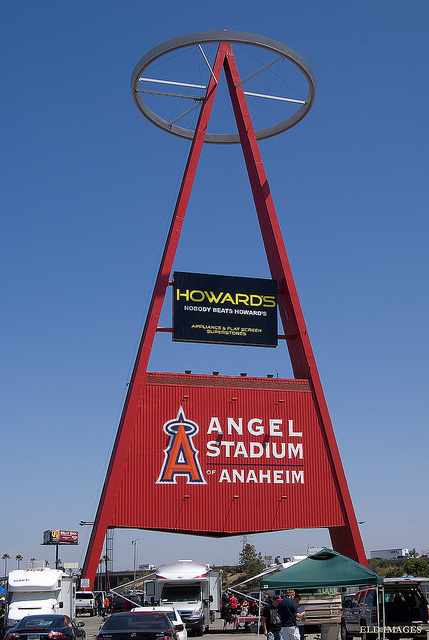 Anaheim Stadium's The Big "A"
Anaheim Stadium's The Big "A"Originally named Anaheim Stadium (1964-1997), it would be later be changed to Edison International Field of Anaheim (1998-2003). It now carries the official name of Angels Stadium of Anaheim representing its ownership by the City of Anaheim.
For most of us, avid, baseball fans the park will be forever known as The Big A, a nickname given in tribute to the 230' tall, 210 ton electronic marquee which originally served as the parks scoreboard supports.
Anaheim Stadium Construction
The construction of Anaheim Stadium stemmed from the need for a home field for the Los Angeles Angels MLB team. The Los Angeles Angels have a deep baseball history that goes back to 1903 when they were a Minor League franchise in the Pacific Coast League (PCL).
The name, Los Angeles Angels, has continued in honor of the early pioneers of West Coast baseball like Phillip K. Wrigley, Walter O'Malley and Gene Autry.
Construction of this new Modern Baseball Park came at a cost of $24 million ($174 million in 2015 dollars) and it would go through a series of renovations costing a little over $118 million ($171 million in 2015 dollars).
Prior to the building of the new stadium the Los Angeles Angel's had shared home field with the Los Angeles Dodgers at Chavez Ravine.
Feeling like second class citizens in that arrangement the Angels
owners decided to build a new, Baseball Only, stadium as a new home of their
team.
Anaheim Stadium Succumbs to Multi-Use
Baseball only stadiums have been a grand experiment by baseball owners and have been spawned by cries from Baseball fans to give back the intimacy of the baseball parks of old.
Baseball fans have always loved the feeling of the close encounters with the players they loved. There is no better feeling than throwing down a blanket or setting up your tent along the fence and watching a afternoon baseball game, up-close and personal.
A stadium built for baseball only has always been the answer to bringing back that intimate feel that has always been a part of the game that we love.
But for a Major League Ball Park, designed to hold 40,000 plus fans and costing hundreds of million dollars, intimacy has always been a challenge for owners and, at times, it seems almost insurmountable.
The cost of paying for that massive investment is daunting and almost every MLB stadium built needed more than just one suitor to generate the necessary cash.
Anaheim Stadium, like those before it, had to succumb to the Multi-use model. The Multi-use concept was built around the sharing of the space to get maximum use of the facility. Baseball and Football were the primary partners used because of the size of their fan base.
So starting in 1974 Anaheim Stadium would play host to a series of Football teams and games;
· Southern California Sun (WFL) 1974-1975
· Los Angeles Rams (NFL) 1980-1994)
· Freedom Bowl (NCAA) 1984-1994)
· California Surf (NASL) -1978-1981)
· Rugby Flock FGC (Castrol Super Rugby) 2013-present)
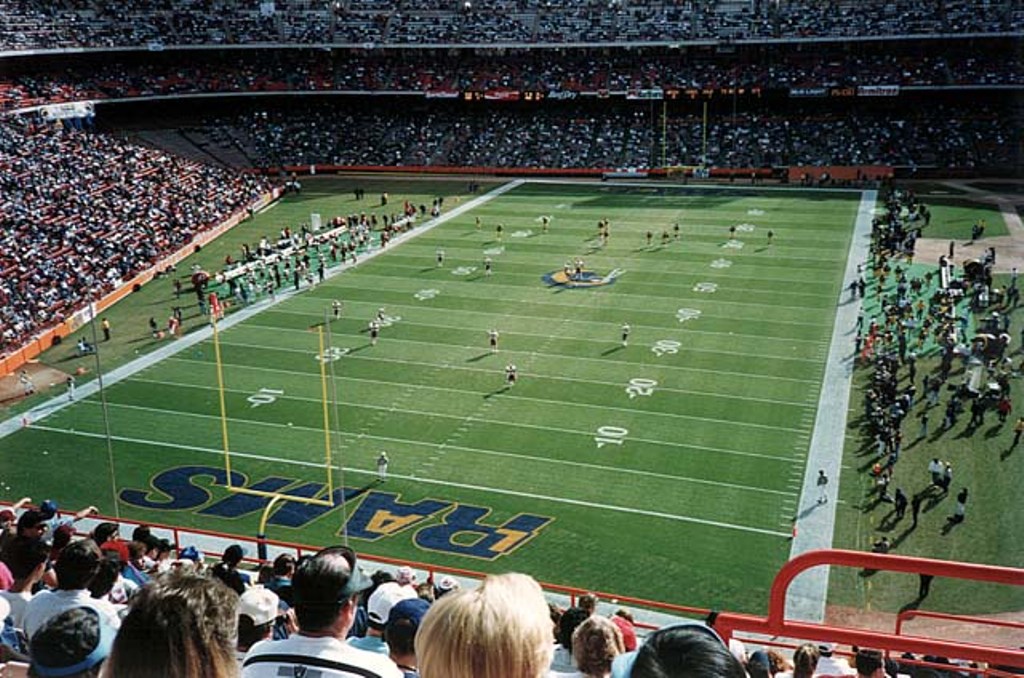
But Football fans are also clamoring for their own intimate space and we already see MLB Stadiums standing alongside NFL stadiums on the same piece of property. After all, the only reason for these investments is to get Fans into the stands.
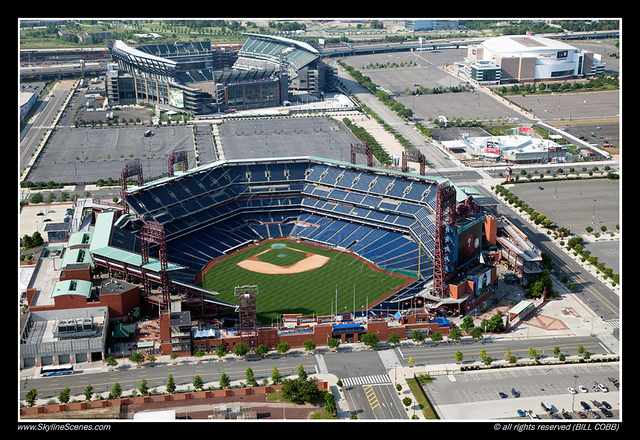 Phillie's Sports Complex
Phillie's Sports ComplexStadium Dimensions
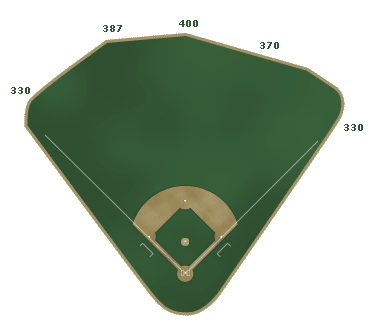 Angel Stadium Field Dimensions after Renovations.
Angel Stadium Field Dimensions after Renovations.Field size;
· Left Field-347 ft (105.8m)
· Left Center Field-390 ft (118.9m)
· Center Field-396 ft (120.7m)
· Right-Center Field-370ft (112.08m)
· Shallow Right-Center-365ft (111.0m)
· Right Field-350ft (106.7m)
· Backstop-60.5ft (18.4m)
Surface;
· Grass
But Baseball-Only Stadiums Are Not Dead.
If, like me, you still long for that genuine Baseball Experience, worry not. Architects and Stadium Builders have heard our cries and there are a host of new, innovative, ballpark designs on the drawing boards.
There is a growing demand for Retractable-Roof Stadiums and designers are catering to the game of Baseball.
Marlins Stadium in Miami, FL. is a prime example of what is yet to come.
Coming Soon!
The concept is one of two visions that gave 360 Architecture the contract to design a new Atlanta Falcons stadium in downtown Atlanta. As it turned out, the final version is just an evolution of the first idea. The stadium will hold some 71,000 people (compared to 65,000 planned initially) and cost $ 1.6 billion (initially thought to be 1 billion).
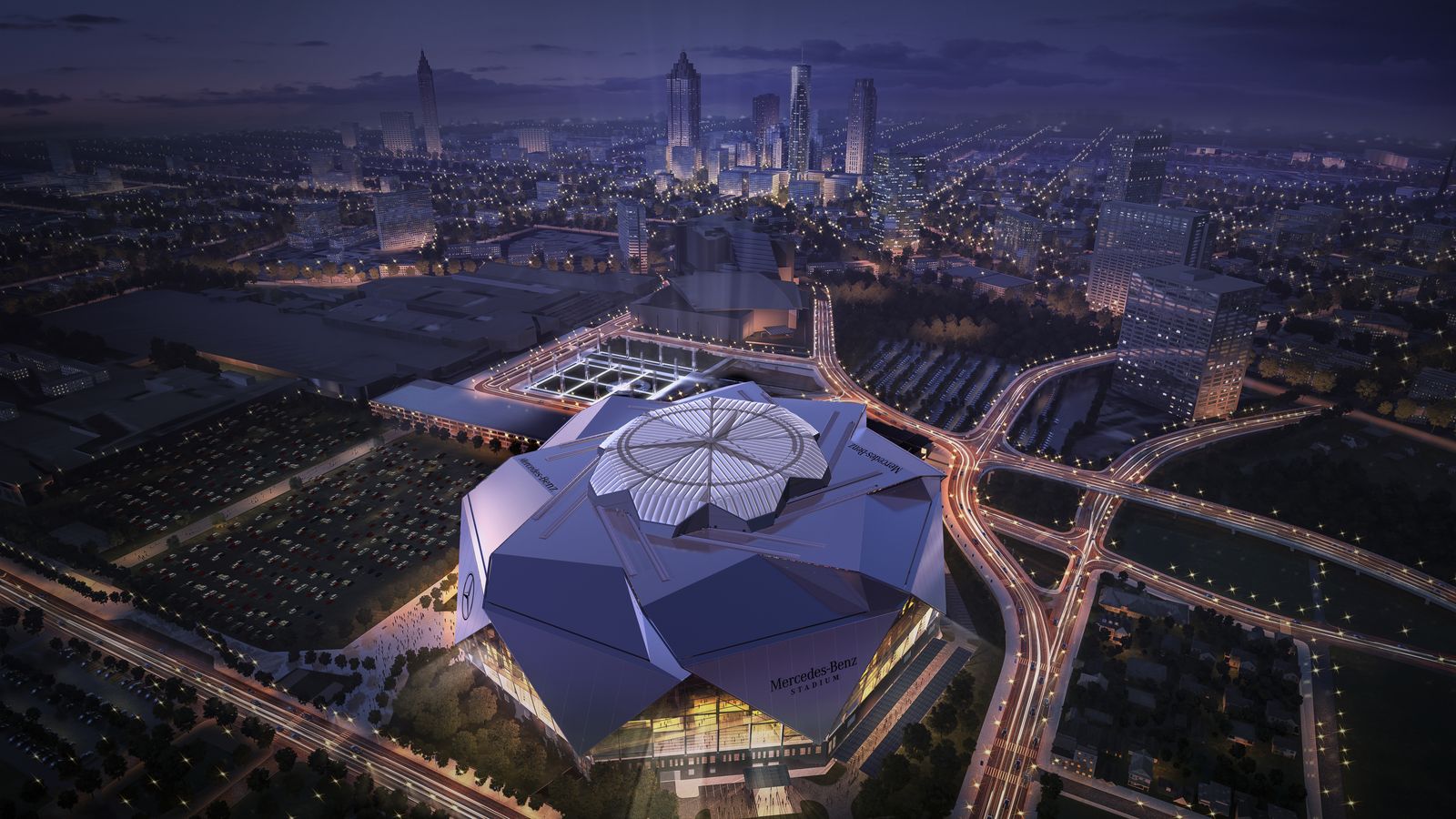 Mercedes Benz Stadium at night top closed.
Mercedes Benz Stadium at night top closed.Nicknamed by architects as the Pantheon, it seems to deserve the name. Connection with the Roman Pantheon is no accident here – independent petals of retractable roof structures may slide to create either a closed dome or a circular skylight above the centre of the field, just like in Rome. Of course each petal may also be located on the permanent roof to give the feeling of a regular stadium with only stands covered.

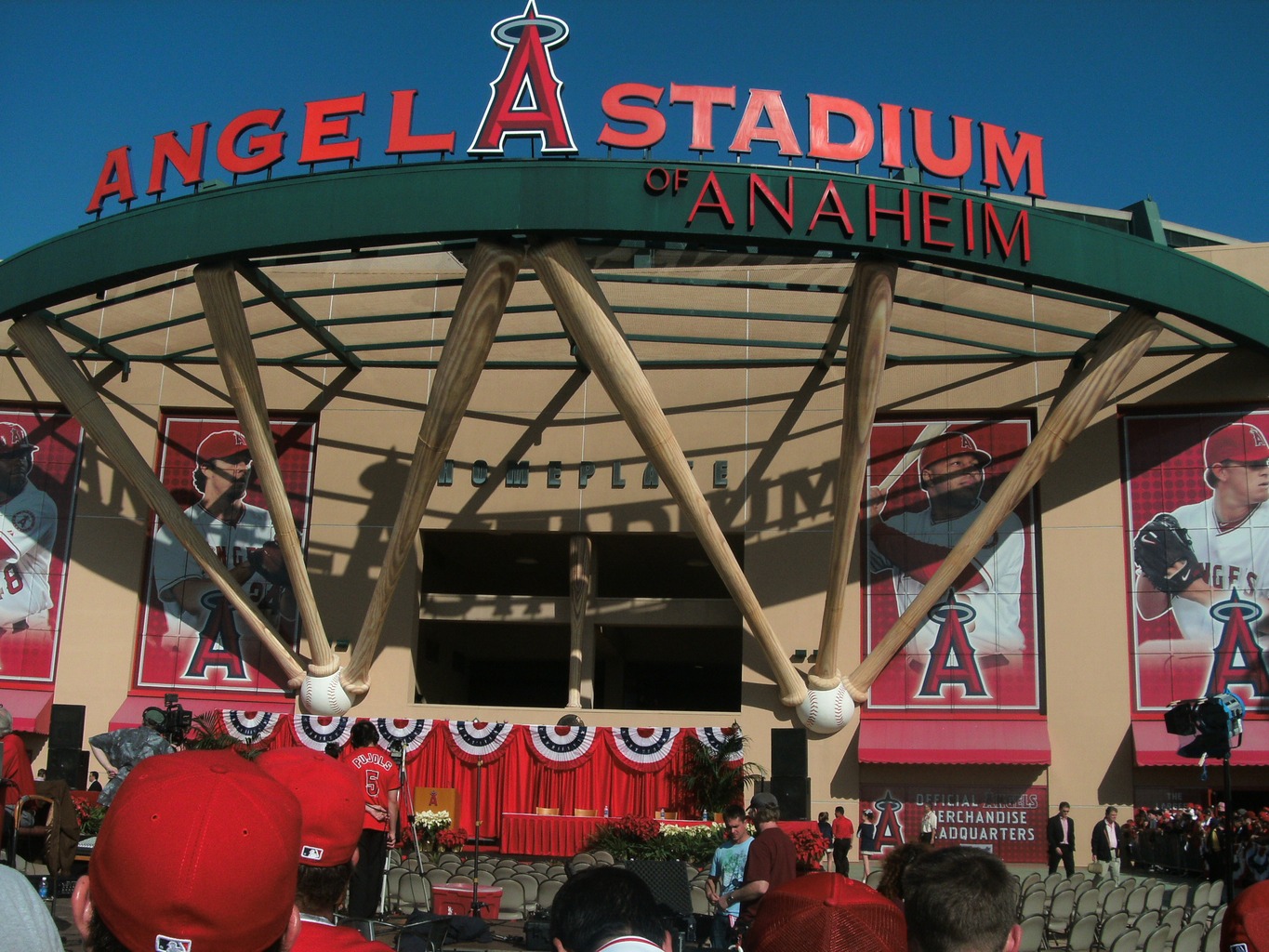
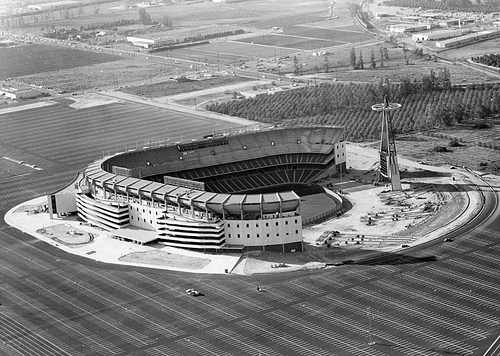
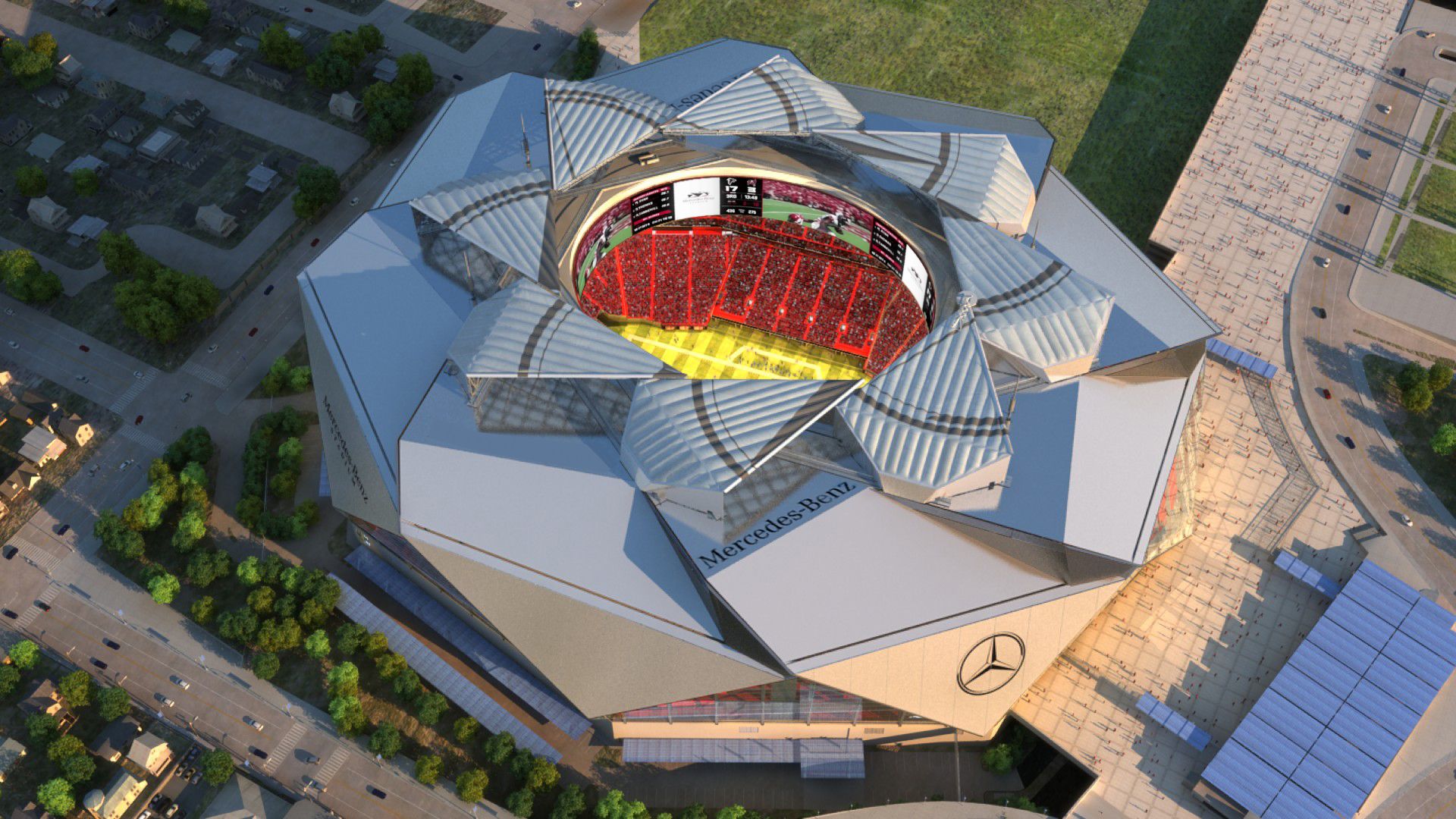
New! Comments
Have your say about what you just read! Leave me a comment in the box below.